Dehydration Blood Pressure Test: Diagnosis and Treatment Guide
How is dehydration diagnosed. What are the key symptoms of dehydration. What treatments are effective for dehydration. How can dehydration be prevented.
Understanding Dehydration: Causes and Symptoms
Dehydration occurs when the body loses more fluids than it takes in, disrupting normal bodily functions. This condition can range from mild to severe and affects people of all ages. But what exactly causes dehydration?
Common causes include:
- Excessive sweating due to heat or physical activity
- Diarrhea and vomiting
- Fever
- Increased urination (e.g., due to diabetes or certain medications)
- Not drinking enough water
Recognizing the symptoms of dehydration is crucial for timely intervention. Early signs include:
- Thirst
- Dry mouth and lips
- Reduced urine output or dark-colored urine
- Fatigue
- Dizziness
As dehydration progresses, more severe symptoms may appear, such as rapid heartbeat, confusion, and in extreme cases, loss of consciousness. Is there a reliable way to test for dehydration at home? While not definitive, checking skin elasticity by pinching the skin on the back of the hand can be indicative – if it doesn’t quickly return to its normal position, dehydration may be present.

The Dehydration Blood Pressure Test: A Key Diagnostic Tool
One of the significant indicators of dehydration is changes in blood pressure. Can blood pressure accurately indicate dehydration? Yes, it can be a valuable diagnostic tool. When dehydrated, blood volume decreases, which can lead to a drop in blood pressure, especially when moving from a lying to a standing position – a condition known as orthostatic hypotension.
During a dehydration blood pressure test, a healthcare provider will:
- Measure blood pressure while the patient is lying down
- Have the patient stand up
- Measure blood pressure again immediately after standing and after a few minutes
A significant drop in blood pressure upon standing can indicate dehydration. This test is particularly useful because it’s non-invasive and can quickly provide important information about a patient’s hydration status.
Comprehensive Diagnosis: Beyond Blood Pressure
While the dehydration blood pressure test is valuable, healthcare providers often use a combination of methods to diagnose dehydration accurately. What other diagnostic tools are commonly employed?

Physical Examination
Doctors will look for physical signs of dehydration, including:
- Dry mouth and tongue
- Lack of skin elasticity
- Sunken eyes
- Reduced urine output
- Rapid heart rate
Blood Tests
Blood samples can reveal crucial information about hydration status. They typically assess:
- Electrolyte levels, particularly sodium and potassium
- Blood urea nitrogen (BUN) to creatinine ratio
- Hematocrit levels
Elevated levels of these markers can indicate dehydration. For instance, a high BUN to creatinine ratio often suggests that the kidneys are retaining urea due to decreased blood flow, a common consequence of dehydration.
Urinalysis
Urine tests can provide valuable insights into hydration status. Healthcare providers will assess:
- Urine color (darker urine suggests dehydration)
- Urine specific gravity (a measure of urine concentration)
- Presence of ketones (which may appear with severe dehydration)
Additionally, urinalysis can help rule out other conditions that might cause similar symptoms, such as urinary tract infections.
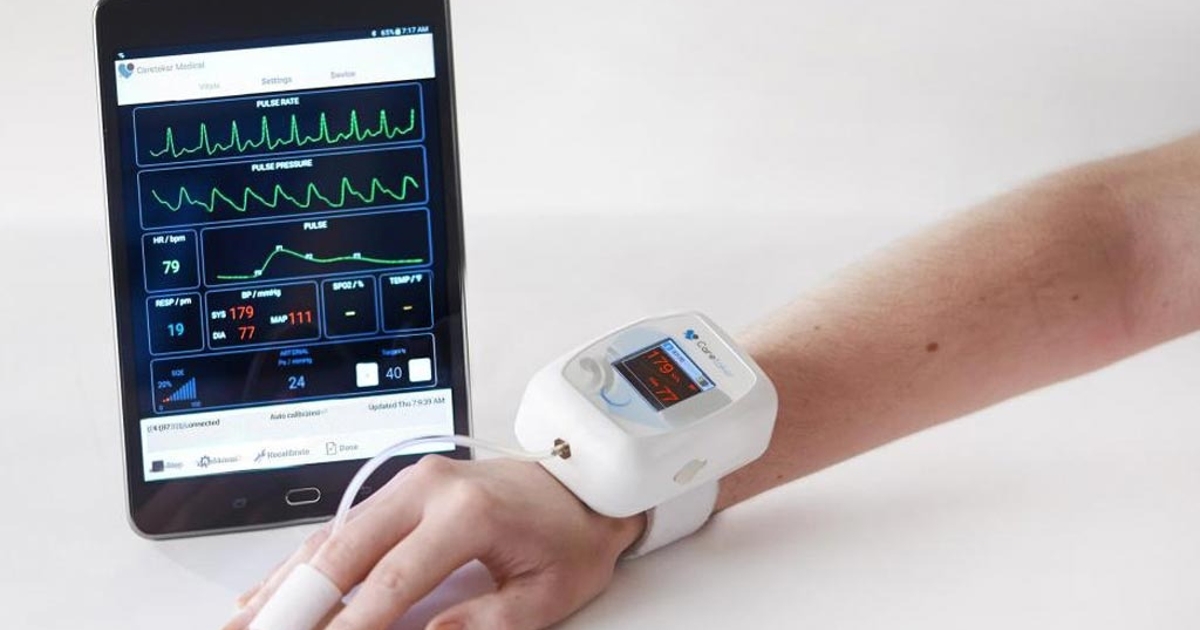
Treatment Strategies for Dehydration
Once dehydration is diagnosed, prompt treatment is essential. How is dehydration typically treated? The primary goal of treatment is to replenish lost fluids and electrolytes. The approach varies depending on the severity of dehydration and the patient’s age.
Mild to Moderate Dehydration
For mild to moderate cases, oral rehydration is often sufficient:
- Increase fluid intake with water, clear broths, or electrolyte solutions
- For infants and young children, use oral rehydration solutions (ORS) designed specifically for pediatric use
- Adults can benefit from sports drinks diluted with water (1:1 ratio)
Is plain water always the best choice for rehydration? While water is crucial, it may not be enough in cases of significant electrolyte loss. Electrolyte-containing solutions can help restore the body’s balance more effectively.
Severe Dehydration
Severe dehydration requires immediate medical attention and often involves:
- Intravenous (IV) fluids to quickly replenish fluids and electrolytes
- Monitoring of vital signs and electrolyte levels
- Treatment of underlying causes (e.g., stopping diarrhea or vomiting)
In some cases, hospitalization may be necessary to ensure proper treatment and monitoring.

Preventing Dehydration: Proactive Measures
Prevention is always better than cure when it comes to dehydration. How can one effectively prevent dehydration? Here are some key strategies:
- Drink plenty of fluids throughout the day, especially in hot weather or during physical activity
- Consume foods with high water content (e.g., fruits and vegetables)
- Monitor urine color – pale yellow indicates good hydration
- Avoid excessive alcohol consumption, which can lead to dehydration
- Replace fluids lost through sweating during exercise
For those at higher risk of dehydration, such as the elderly or those with certain medical conditions, extra precautions may be necessary. This might include setting reminders to drink water regularly or using oral rehydration solutions proactively during illness.
Special Considerations for Different Age Groups
Dehydration affects different age groups in varying ways. How does the approach to diagnosis and treatment differ across age groups?
Infants and Young Children
Infants and young children are particularly vulnerable to dehydration, often due to diarrhea or vomiting. Key considerations include:

- Using pediatric oral rehydration solutions
- Monitoring for signs like dry diapers, sunken fontanelles, and lethargy
- Continuing breastfeeding or formula feeding along with rehydration efforts
Parents should seek medical attention promptly if signs of dehydration persist or worsen.
Adults
While generally more resilient, adults can still suffer from dehydration, especially during illness or intense physical activity. Important points include:
- Recognizing early signs like thirst, fatigue, and reduced urine output
- Balancing electrolyte intake along with fluid replenishment
- Being aware of medications that may increase dehydration risk
Elderly
Older adults are at higher risk of dehydration due to various factors:
- Reduced sense of thirst
- Kidney function changes
- Medication side effects
For the elderly, proactive hydration strategies and regular monitoring are crucial. Caregivers should be vigilant about encouraging regular fluid intake.
Complications of Untreated Dehydration
If left untreated, dehydration can lead to serious complications. What are the potential consequences of prolonged dehydration?

- Heat injury: From mild heat cramps to life-threatening heatstroke
- Urinary and kidney problems: Including urinary tract infections, kidney stones, and kidney failure
- Seizures: Due to electrolyte imbalances, particularly sodium and potassium
- Hypovolemic shock: A life-threatening condition caused by low blood volume
- Cerebral edema: Particularly dangerous if rehydration is done too quickly
These complications underscore the importance of prompt diagnosis and treatment of dehydration. In severe cases, these conditions can be life-threatening and require immediate medical intervention.
Dehydration in Specific Medical Conditions
Certain medical conditions can increase the risk of dehydration or complicate its management. How does dehydration interact with various health conditions?
Diabetes
People with diabetes, especially when poorly controlled, are at higher risk of dehydration due to:
- Increased urination, particularly in hyperglycemia
- Higher susceptibility to heat-related dehydration
- Potential medication side effects
Careful monitoring of blood sugar levels and hydration status is crucial for diabetic patients.
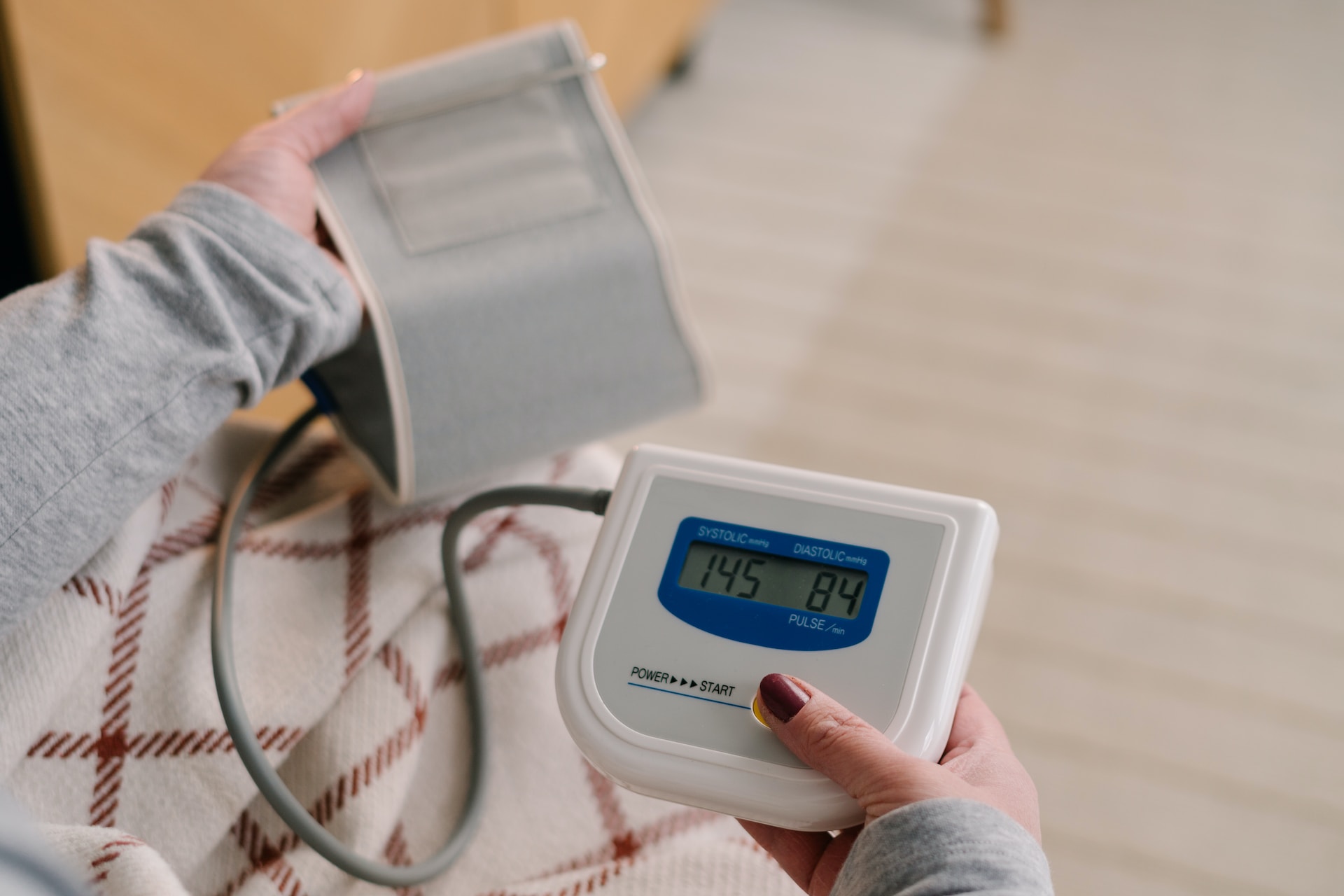
Gastrointestinal Disorders
Conditions like inflammatory bowel disease or celiac disease can lead to chronic diarrhea, increasing dehydration risk. Management involves:
- Regular electrolyte monitoring
- Customized rehydration plans
- Treating underlying conditions to minimize fluid loss
Chronic Kidney Disease
Patients with kidney disease face unique challenges in fluid management:
- Balancing fluid intake to avoid both dehydration and fluid overload
- Careful electrolyte management
- Regular consultations with nephrologists for personalized hydration strategies
In these cases, the standard approach to dehydration treatment may need to be modified to suit the individual’s specific health needs.
Technological Advancements in Dehydration Management
As medical technology advances, new tools are emerging to help diagnose and manage dehydration more effectively. What innovations are making an impact in this field?
Wearable Hydration Monitors
Recent developments include:
- Smart patches that analyze sweat composition
- Wristbands that track hydration levels through skin conductivity
- Apps that integrate hydration data with other health metrics
These devices can provide real-time feedback, helping individuals maintain optimal hydration levels, especially during physical activities or in hot environments.
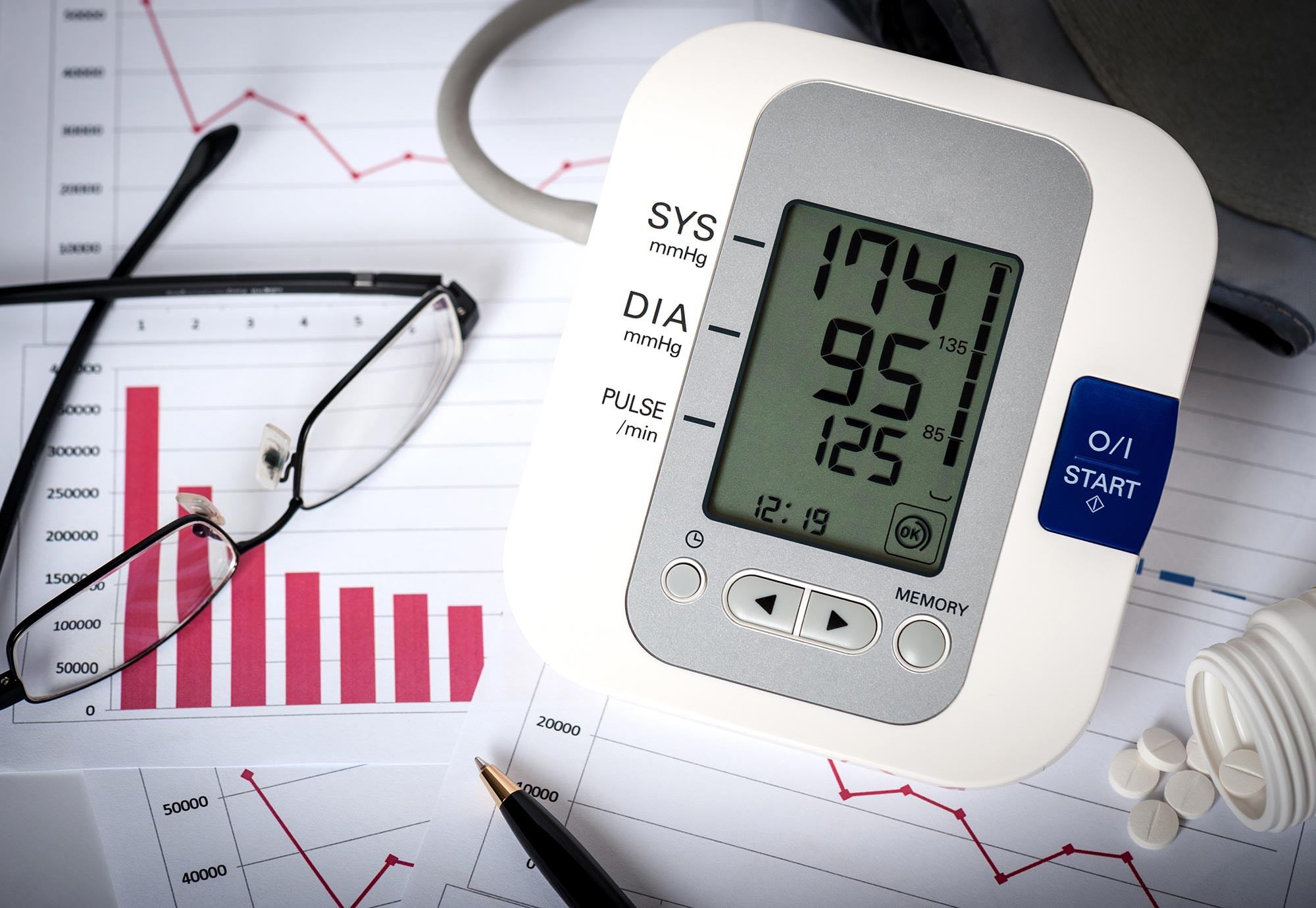
Advanced Diagnostic Tools
In clinical settings, new technologies are enhancing diagnostic accuracy:
- Bioimpedance analysis for rapid assessment of body fluid status
- Portable ultrasound devices for evaluating inferior vena cava diameter, an indicator of hydration status
- Point-of-care testing for quick electrolyte analysis
These tools allow for more precise and timely diagnosis of dehydration, potentially improving treatment outcomes.
Smart Rehydration Solutions
Innovations in oral rehydration solutions include:
- Formulations with optimized electrolyte ratios
- Addition of beneficial compounds like zinc or prebiotics
- Improved taste and palatability to encourage consumption
These advancements make rehydration more effective and increase compliance, especially in pediatric populations.
As technology continues to evolve, we can expect even more sophisticated tools for managing hydration status, potentially revolutionizing how we approach dehydration prevention and treatment.
The Role of Nutrition in Hydration Management
While fluid intake is crucial for hydration, nutrition also plays a significant role. How does diet impact hydration status?
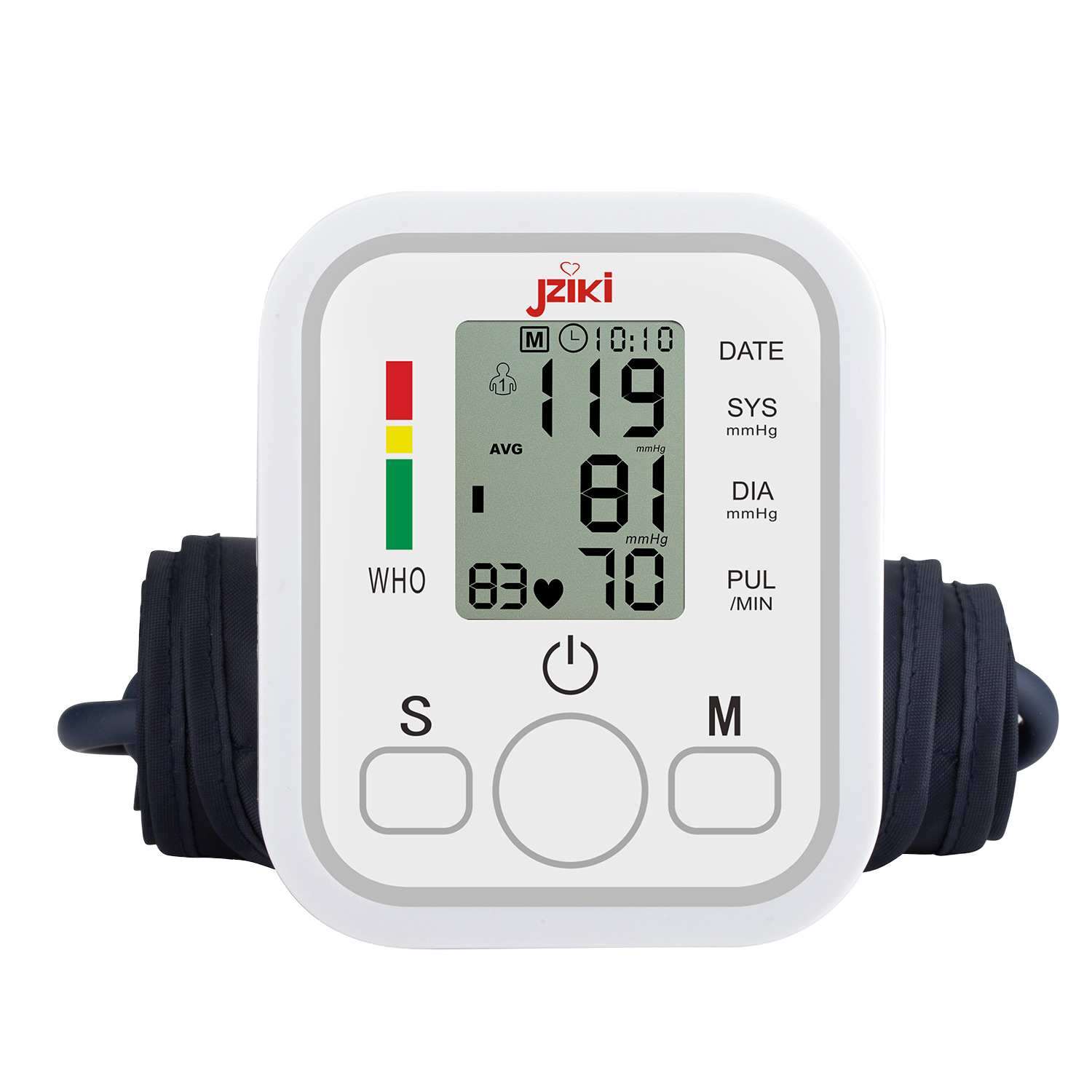
Hydrating Foods
Many foods contribute significantly to daily fluid intake:
- Fruits like watermelon, strawberries, and oranges
- Vegetables such as cucumber, zucchini, and tomatoes
- Soups and broths
Incorporating these foods into the diet can help maintain hydration, especially for individuals who struggle to drink enough water.
Electrolyte-Rich Foods
Certain foods are excellent sources of electrolytes:
- Bananas and sweet potatoes for potassium
- Leafy greens for magnesium
- Dairy products for calcium
Consuming a balanced diet rich in these foods can help maintain electrolyte balance, complementing fluid intake.
Avoiding Dehydrating Foods and Beverages
Some dietary choices can contribute to dehydration:
- Caffeine and alcohol, which have diuretic effects
- High-sodium foods, which can upset fluid balance
- Sugary drinks, which may not hydrate as effectively as water
Moderation in consuming these items and balancing them with adequate water intake is key to maintaining hydration.
Understanding the relationship between nutrition and hydration can help individuals make dietary choices that support overall hydration status, complementing other hydration strategies.

Environmental Factors and Dehydration Risk
Environmental conditions play a significant role in dehydration risk. How do different environments affect hydration status?
Hot and Humid Climates
In hot and humid conditions:
- The body loses more fluid through sweating
- There’s an increased risk of heat-related illnesses
- Thirst may not be an adequate indicator of hydration needs
People in these climates need to be proactive about fluid intake, often drinking more than they feel they need.
High Altitudes
At high altitudes:
- The air is drier, leading to increased fluid loss through respiration
- Urine output may increase as part of the body’s adaptation
- Symptoms of dehydration can be mistaken for altitude sickness
Travelers to high-altitude areas should increase their fluid intake and be aware of the signs of both dehydration and altitude sickness.
Air Travel
During air travel:
- Low humidity in aircraft cabins can lead to increased fluid loss
- The diuretic effect of alcohol is amplified
- Changes in routine can disrupt normal hydration habits
Passengers on long flights should make a conscious effort to drink water regularly and limit alcohol consumption.

Understanding these environmental factors allows individuals to adjust their hydration strategies accordingly, reducing the risk of dehydration in challenging conditions.
Dehydration – Diagnosis & treatment
Diagnosis
Your doctor can often diagnose dehydration on the basis of physical signs and symptoms. If you’re dehydrated, you’re also likely to have low blood pressure, especially when moving from a lying to a standing position, a faster than normal heart rate and reduced blood flow to your extremities.
To help confirm the diagnosis and pinpoint the degree of dehydration, you may have other tests, such as:
- Blood tests. Blood samples may be used to check for a number of factors, such as the levels of your electrolytes — especially sodium and potassium — and how well your kidneys are working.
- Urinalysis. Tests done on your urine can help show whether you’re dehydrated and to what degree. They also can check for signs of a bladder infection.
More Information
Treatment
The only effective treatment for dehydration is to replace lost fluids and lost electrolytes. The best approach to dehydration treatment depends on age, the severity of dehydration and its cause.
The best approach to dehydration treatment depends on age, the severity of dehydration and its cause.
For infants and children who have become dehydrated from diarrhea, vomiting or fever, use an over-the-counter oral rehydration solution. These solutions contain water and salts in specific proportions to replenish both fluids and electrolytes.
Start with about a teaspoon (5 milliliters) every one to five minutes and increase as tolerated. It may be easier to use a syringe for very young children. Older children can be given diluted sports drinks. Use 1 part sports drink to 1 part water.
Most adults with mild to moderate dehydration from diarrhea, vomiting or fever can improve their condition by drinking more water or other liquids. Diarrhea may be worsened by full-strength fruit juice and soft drinks.
If you work or exercise outdoors during hot or humid weather, cool water is your best bet. Sports drinks containing electrolytes and a carbohydrate solution also may be helpful./1298399-article-img-causes-of-fainting1-5a5520127bb283003773f0c9.png)
Children and adults who are severely dehydrated should be treated by emergency personnel arriving in an ambulance or in a hospital emergency room. Salts and fluids delivered through a vein (intravenously) are absorbed quickly and speed recovery.
Preparing for your appointment
You’re likely to start by seeing your or your child’s doctor. However, in some cases when you call to set up an appointment, the doctor may recommend urgent medical care. If you, your child or an adult who you care for is showing signs of severe dehydration, such as lethargy or reduced responsiveness, seek immediate care at a hospital.
If you have time to prepare for your appointment, here’s some information to help you get ready, and what to expect from the doctor.
What you can do
- Write down any symptoms you or the person you’re caring for is experiencing, including any that may seem unrelated to the reason for which you scheduled the appointment.
 If you or the person you’re caring for has been vomiting or has had diarrhea, the doctor will want to know when it began and how frequently it’s been occurring.
If you or the person you’re caring for has been vomiting or has had diarrhea, the doctor will want to know when it began and how frequently it’s been occurring. - Write down key personal information, including any recent trips taken or foods recently eaten that might have caused illness. In addition, your doctor will want to know if you or the person you’re caring for has recently been exposed to anyone with diarrhea.
- Make a list of key medical information, including other conditions you or the person you’re caring for is being treated for and the names of the medications being taken. Include on your list prescription and over-the-counter drugs, as well as any vitamins and supplements.
- Write down questions to ask your doctor.
For dehydration, some basic questions to ask the doctor include:
- What’s causing these symptoms?
- What kinds of tests are needed?
- What treatment do you recommend?
- How soon after treatment will there be improvement?
- Are there any activity or dietary restrictions?
- Is there anything I can do to prevent a recurrence of dehydration?
- I have other health conditions.
 Do I need to change the treatments I’ve been using for them?
Do I need to change the treatments I’ve been using for them? - What steps can I take to prevent dehydration from happening again?
What to expect from your doctor
Your doctor is likely to ask you a number of questions, such as:
- When did the symptoms begin? What were you doing?
- Are you able to keep down any food or drink?
- How recently have you urinated? Are you experiencing any pain or urgency with urination?
- Do you also have other signs or symptoms, such as abdominal cramping, fever, headache or muscle aches? How severe are these signs and symptoms?
- Has there been blood in your stools?
- Have you recently eaten any food that you suspect was spoiled?
- Has anyone gotten sick after eating the same food that you did?
- Have you recently been exposed to someone who you know was experiencing diarrhea?
- Have you been coughing or had a runny nose?
- What medications are you currently taking?
- Have you recently traveled to another country?
- Do you know what your or your child’s weight was before symptoms started?
Can Dehydration Cause High Blood Pressure?
December 21, 2021
Can Dehydration Cause High Blood Pressure?
High blood pressure is a chronic condition where the force of your blood is higher than normal and pushes strongly against your blood vessel walls. When it’s not treated, high blood pressure can lead to other serious health problems including heart attack and stroke.
When it’s not treated, high blood pressure can lead to other serious health problems including heart attack and stroke.
Many different factors can cause high blood pressure. It’s possible that dehydration may cause high blood pressure.
Here’s a closer look at the link between dehydration and high blood pressure, as well as signs when you should see a doctor right away.
Can Being Dehydrated Cause High Blood Pressure?
“Dehydration is a possible cause of high blood pressure,” says Dr. Jason Varghese, a family medicine physician with Healthcare Associates of Texas.
Nearly 60% of the human adult body is made up of water. Your body needs water to carry out important functions. For instance, it helps regulate body temperature and flush out waste.
Dehydration occurs when your body does not have enough fluids. It can happen after a period of heavy sweating or if you’re not drinking enough water. It can also happen if you are sick and cannot keep fluids in your body due to excessive vomiting and/or diarrhea.
How Does Dehydration Affect Blood Pressure?
Dehydration can make your blood pressure go up or down to cause high blood pressure (Hypertension) or low blood pressure (Hypotension).
Low Blood Pressure
Dehydration can cause your blood volume to decrease. Blood volume is the amount of fluid in your blood vessels. Having a normal blood volume is important because it allows your blood to reach all the tissues and organs in your body. However, a low blood volume can cause your blood pressure to drop.
If you’re dehydrated, your blood volume and blood pressure can drop too low. This can prevent your tissues and organs from getting the amount of oxygen and nutrients they need to stay healthy.
“When left untreated, low blood pressure can cause other issues, like heart and/or brain damage,” Dr. Varghese adds.
High Blood Pressure
When your body is dehydrated, it releases higher amounts of a chemical called vasopressin. Vasopressin helps your kidneys retain water, which can prevent you from losing more water through urination. At the same time, it causes your blood vessels to constrict, which then causes your blood pressure to increase. When this situation persists, you can develop high blood pressure.
At the same time, it causes your blood vessels to constrict, which then causes your blood pressure to increase. When this situation persists, you can develop high blood pressure.
What Are Other Symptoms of Dehydration?
“Dehydration has a lot of potential symptoms, including feeling extremely thirsty, dry mouth, darker-colored urine, and dizziness,” Dr. Varghese says.
Symptoms will usually occur before dehydration starts affecting your blood pressure.
Other symptoms of dehydration include:
- Less frequent urination
- Headache
- Fatigue
- Confusion
- Bad breath
- Dry skin
- Muscle cramps
- Cravings for junk foods
Drink some water if you are experiencing any of the above symptoms. Also, think about your recent water intake to determine whether you have been drinking enough. For example, are you having these symptoms after spending several hours in the sun? If so, it’s possible you have not been drinking enough water and may be dehydrated.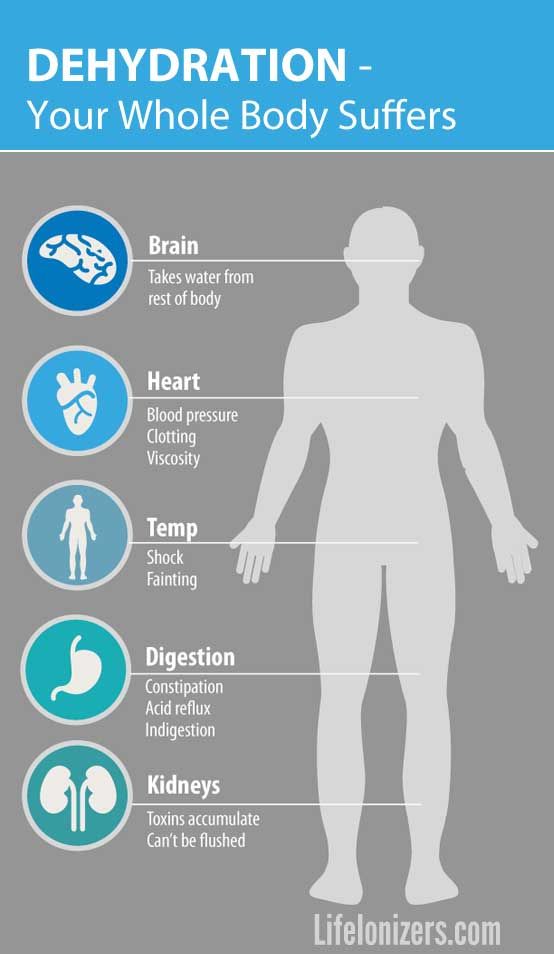
What Causes Dehydration?
Dehydration can happen for a variety of reasons. It can happen if you are sick and cannot keep fluids down for very long. It can also happen if you don’t have enough water on hand, such as during a road trip.
- Vomiting and having diarrhea, which can cause you to loose fluids
- Heavy sweating during strenuous exercising
- Fever
- Frequent urination
- Drinking beverages like coffee or alcohol, which increase urination
- Forgetting to drink water, such as when you are super busy
- Having kidney disease or uncontrolled diabetes
- Lack of access to clean drinking water
“I want to add that dehydration can occur even during cold winter months. Although you are not sweating profusely, you may become dehydrated if you don’t drink enough water which could lead to elevated or low blood pressure,” Dr. Varghese explains.
How Much Water Should You Drink Every Day?
Drinking lots of water throughout the day can prevent you from becoming dehydrated and reduce your risk of getting high blood pressure. Some doctors suggest drinking about eight glasses of water a day.
Some doctors suggest drinking about eight glasses of water a day.
“The ‘correct’ amount of water you should be drinking every day can vary per person. It depends on numerous factors such as your weight, physical activity level, etc.,” Dr. Varghese explains.
Ask your doctor about how much water you should drink every day based on your personal health situation. Your doctor can review your medical history, talk to you about your lifestyle, and make the best recommendation based on this information.
What Are Other Causes of High Blood Pressure?
Dehydration is just one possible cause of high blood pressure. High blood pressure can also be caused by certain lifestyle behaviors or by other medical conditions.
Common causes and risk factors of high blood pressure include:
- Being overweight or obese
- Lack of exercise
- Smoking
- Eating high amounts of salt
- Lack of potassium in the diet
- Heavy alcohol use
- Stress
- Thyroid disorders
- Sleep apnea
- Diabetes
- Kidney disease
- Tumors in the adrenal gland
- Using illicit drugs, such as cocaine and methamphetamine
- Using certain medications, such as birth control pills, antidepressants, and corticosteroids
“Most people don’t know when they have high blood pressure because high blood pressure doesn’t usually show any symptoms,” Dr. Varghese says.
Varghese says.
However, some people with high blood pressure may experience headaches, shortness of breath, or bloody noses.
Doctors usually check your blood pressure during routine appointments, such as annual physicals or well-check visits. Make an appointment with your doctor if you think you may be at risk for high blood pressure. Getting your blood pressure under control can reduce your risk for heart attack, stroke, heart failure, and dementia.
When It’s Time to See a Doctor
Visit your doctor right away if you are experiencing the following symptoms:
- Diarrhea or vomiting that has lasted longer than 24 hours
- Rapid heart rate
- Extreme confusion
- Extreme exhaustion or fatigue
- Black or bloody stool
- Blurred vision
- Dizziness or lightheadedness
- Loss of conscious or passing out
- Cold, clammy skin
- Rapid, shallow breathing
- Weak and rapid pulse
The above symptoms may indicate that you are either severely dehydrated or have low blood pressure. Your doctor can perform an evaluation and talk to you about possible treatment options.
Your doctor can perform an evaluation and talk to you about possible treatment options.
Treating High Blood Pressure with Healthcare Associates of Texas
Healthcare Associates of Texas is home to a large team of board-certified medical professionals who can work with you to treat high blood pressure. Our doctors can talk to you in more detail about the link between dehydration and blood pressure, and what you can start doing today to improve your overall health. Click here to find your nearest location and request an appointment.
Reviewed for medical accuracy by
December 21, 2021
Dr. Jason Varghese
Dr. Varghese’s care philosophy is built around preventative medicine, patient education, and establishing a lasting relationship with his patients. He believes that every patient is special and should feel important. He wants everyone to feel part of a big family.
He wants everyone to feel part of a big family.
Dr. Varghese is a family medicine doctor in Midlothian, TX and is currently accepting new patients.
Posted in: Cardiovascular Health, Health Education
Renin direct (EDTA plasma) – to be tested in St. Petersburg and other regions
Medical center at Bogatyrsky pr., 4Laboratory terminal at Aleksandrovskaya Fermy avenue, 8Laboratory terminal at Nastavnikov avenue, 36k2Laboratory terminal at ul. Budapestskaya, 6Medical center on Pulkovskoye shosse, 28A Medical center on Kondratievsky prospect, 62k3Medical center on Prosveshcheniya avenue, 14k4Medical center on Moiseenko, 5Laboratory terminal on the street. Oleko Dundicha, 8, room 2Laboratory terminal on the street. Pestelya, 25AMedical center on Leninsky prospect, 88Medical center on Okhtinskaya alley, 4 (Murino, Leningrad region)Laboratory terminal on the street. Turku, 5/13 St. Petersburg, Exit serviceMedical center on the street. Savushkina, 14
Price:
1 315 ₽
Add to cart
Renin is an enzyme that regulates blood pressure. It is secreted by the arterioles of the renal glomeruli in response to a drop in blood pressure. The kidneys respond to changes in the concentration of sodium and potassium. Renin acts on angiotensinogens (oligopeptide hormones), converting them to type I angiotensin, which is then converted to type II. Hormones of the second type have a strong vasoconstrictive effect. As a result, renin increases blood pressure, helps maintain potassium and sodium levels within the normal range.
It is secreted by the arterioles of the renal glomeruli in response to a drop in blood pressure. The kidneys respond to changes in the concentration of sodium and potassium. Renin acts on angiotensinogens (oligopeptide hormones), converting them to type I angiotensin, which is then converted to type II. Hormones of the second type have a strong vasoconstrictive effect. As a result, renin increases blood pressure, helps maintain potassium and sodium levels within the normal range.
Testing is prescribed for the medical diagnosis of diseases associated with drops, a decrease or increase in blood pressure:
hypertensive conditions;
renal vascular pathology;
primary aldosteronism and hyperaldosteronism.
Assign a renin test to identify the causes of low potassium levels or high blood pressure. It is also carried out in conjunction with a study on aldosterone, when drug therapy for hypertension does not bring a positive result.
A referral for the test can be obtained from a general practitioner, family doctor, cardiologist, endocrinologist, oncologist, nephrologist and gynecologist. Important! Correctly interpreting the results of the analysis for renin is possible only with test data on the level of cortisol and aldosterone.
Therefore, testing is carried out in a complex way, calculating the results of studies on aldosterone, cortisol, and sometimes drenocorticotropic hormone.
1. Low renin – high aldosterone.
This may indicate primary hyperaldosteronism, a tumor of the adrenal gland. This condition is also accompanied by a decrease in the concentration of potassium, which is expressed in muscle weakness.
2. High levels of renin and aldosterone.
These indicators may indicate the presence of secondary aldosteronism caused by a decrease in blood pressure and a drop in sodium concentration. In this condition, blood vessels constrict, reducing blood flow to the kidneys. The response of the body is an uncontrolled increase in pressure. Symptoms can occur against the background of heart failure, chronic kidney disease, diabetes, cirrhosis.
The response of the body is an uncontrolled increase in pressure. Symptoms can occur against the background of heart failure, chronic kidney disease, diabetes, cirrhosis.
3. High renin – low aldosterone.
It indicates chronic insufficiency of the adrenal cortex (hypocorticism), which in turn causes autoimmune aggression, hypoplasia, tumors and metastases in the adrenal glands and other conditions. Symptoms include low blood pressure, weight loss, dehydration, lack of sodium and potassium, chronic fatigue, and depression.
How to prepare for analysis
Influence of diet. Renin levels change with excessive salt intake, so salty foods should be limited.
Medicines. Some medications have an effect: aspirin, corticosteroids, estrogenic and diuretic drugs. Therefore, after agreeing with the doctor, stop taking medication for a day, and taking inhibitors for a week.
Body position. Before donating blood, you need to sit or lie down, staying in this position for about 2 hours.:max_bytes(150000):strip_icc()/how-low-blood-pressure-is-diagnosed-4689153_color-be4ad181b729480b959cb88bf40283e0.png) Stress and physical exertion change the concentration of the enzyme. The rate is higher in the morning. Therefore, the analysis for renin is carried out in the morning in a calm state, they give up alcohol in a day, do not smoke at 2-3 hours.
Stress and physical exertion change the concentration of the enzyme. The rate is higher in the morning. Therefore, the analysis for renin is carried out in the morning in a calm state, they give up alcohol in a day, do not smoke at 2-3 hours.
Synonyms: blood test for renin / Renin
Equipment: LiasonXL / DiaSorin
8 (812) 600-42-00
It is recommended to donate blood on an empty stomach (at least 8 hours and not more than 12 hours of fasting). Drinking – water, as usual. On the eve of the study, exclude: food, physical and emotional overload, alcohol and energy drinks. Stop smoking 1 hour before the study. For 2-4 weeks, in agreement with the attending physician, you should stop taking drugs that may affect the results of the study (diuretics, antihypertensive drugs, oral contraceptives, licorice preparations). It is recommended to take blood from the patient in the “sitting” position – after 30 minutes. standing and in the “lying” position – after 30 minutes. lying.
lying.
Similar tests
Aldosterone-renin ratio
5 days
from 1,670 ₽
Add to cart 5 days
from 1 315 ₽
Add to cart
Aldosterone
up to 5 days
from 755 ₽
Add to cart
Analysis available in these centers:
Medical center on Bogatyrsky pr., 4
Medical center on the street. Moiseenko, 5
Medical center on Prosveshcheniya avenue, 14k4
Medical center on the street. Savushkina, 14
Savushkina, 14
Laboratory terminal on the street. Turku, 5/13
Medical center on Okhtinskaya alley, 4 (Murino, Leningrad region)
Laboratory terminal on the street. Pestelya, 25A
Laboratory terminal on the street. Oleko Dundicha, 8, building 2
Laboratory terminal on the street. Budapestskaya, 6
Budapestskaya, 6
Medical center at Pulkovskoe shosse, 28A
Laboratory terminal at Nastavnikov Ave., 36k2
Laboratory terminal at Aleksandrovskaya Ferma avenue, 8
Medical center on Leninsky pr., 88
Medical center on Kondratievsky prospect, 62k3
ORTOKROSS clinic on the 5th line of V. O., 8A (official partner)
O., 8A (official partner)
Laboratory terminal at Kronverksky pr., 31 (official partner)
Clinic “PulkovoStom” on Pulkovskoye shosse, 26, building 6. (official partner)
Laboratory terminal on the street. Savushkina, 124 (official partner)
Laboratory terminal on Bolshoy pr. V.O., 5 (official partner)
Functional diagnostics doctor
Functional diagnostics – examination of the respiratory, cardiovascular and central nervous systems using specialized medical equipment. A functional diagnostician (FD) doctor studies pathologies in the functioning of organs. The FD doctor also interprets the data obtained, controls the success of the therapy prescribed by the attending physician.
A functional diagnostician (FD) doctor studies pathologies in the functioning of organs. The FD doctor also interprets the data obtained, controls the success of the therapy prescribed by the attending physician.
As a rule, the study by FD methods is prescribed by general practitioners, neurologists, cardiologists and vascular surgeons. Also, functional diagnostics is prescribed during the passage to undertake the treatment of heart, vascular diseases, respiratory disorders and neurological problems to doctors of narrow specialties.
Blood pressure measurement (BP monitoring)
Measurement of blood pressure for some patients is a daily routine. Often, devices for measuring blood pressure are stored at home. What is the difference between single measurement and daily monitoring? Carried out on a wearable monitor, blood pressure measurement gives a chance to perform the procedure during active physical activity, while sleeping, while taking medication, etc.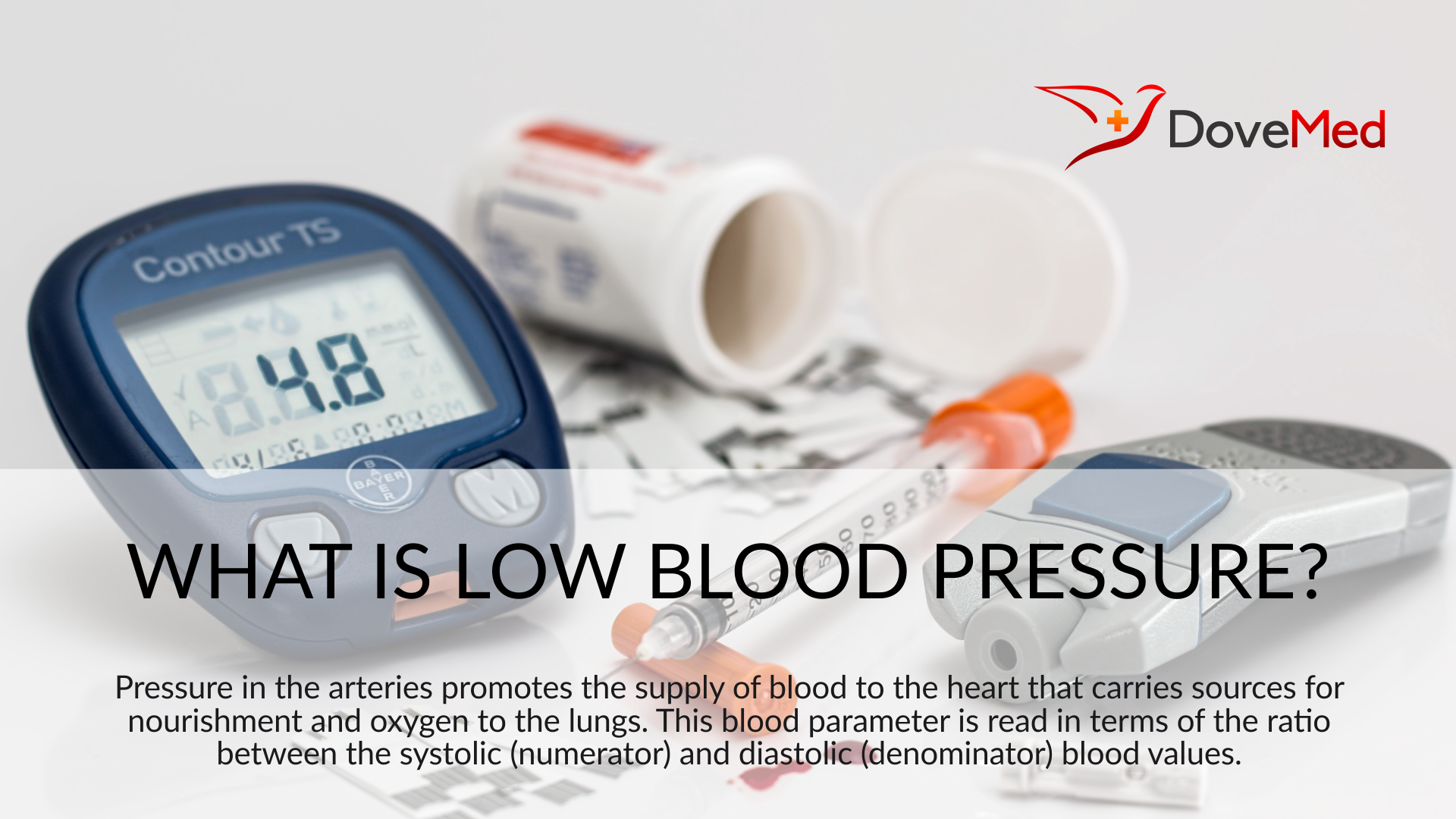 The device itself will build a daily schedule that reflects not only the increase and decrease in pressure, but also the body’s reaction to changing weather conditions, stress, stress, and will also give a forecast of damage to organs that are more affected by high blood pressure (heart, brain). During therapy, monitoring of blood pressure will allow taking into account the favorable hours of taking drugs, based on the features of the identified circadian rhythm of blood pressure. Most of all, BP monitoring is aimed at predicting, i.e. it is an essential part of health screening and an important preventive measure.
The device itself will build a daily schedule that reflects not only the increase and decrease in pressure, but also the body’s reaction to changing weather conditions, stress, stress, and will also give a forecast of damage to organs that are more affected by high blood pressure (heart, brain). During therapy, monitoring of blood pressure will allow taking into account the favorable hours of taking drugs, based on the features of the identified circadian rhythm of blood pressure. Most of all, BP monitoring is aimed at predicting, i.e. it is an essential part of health screening and an important preventive measure.
Electrocardiography (ECG)
Electrocardiography is a method for diagnosing disorders of the heart and obtaining information about the conduction of the heart rhythm. 24-hour ECG monitoring shows the effectiveness of drug therapy, helps the doctor adjust the dosage and frequency of medication. It is carried out during sleep and wakefulness. In athletes, the use of an EEG monitor serves to determine the resource and exercise tolerance. Detects pathologies of the cardiovascular system that are not determined by single EEG. EEG monitoring is justified to detect latent myocardial ischemia, without complaints of malaise on the part of the patient, in the conditions of a habitual lifestyle.
Detects pathologies of the cardiovascular system that are not determined by single EEG. EEG monitoring is justified to detect latent myocardial ischemia, without complaints of malaise on the part of the patient, in the conditions of a habitual lifestyle.
Bicycle ergometry (VEM)
Bicycle ergometry is a common and affordable way to diagnose IHD (coronary heart disease). It consists in simulating cycling (bicycle ergometer). There is an increase in coronary blood flow, and the load on the heart increases. Measurement electrodes are attached to the chest. At rest, readings of blood pressure and electrocardiography are taken, then the stress test begins. During the test, there is a gradual increase in the load, and the recording of ECG and blood pressure data. Bicycle ergometry reveals violations (including hidden ones) in the work of the cardiovascular system.
Electroencephalography
Electroencephalography (EEG) is a method of studying the brain, which is based on the registration of electrical activity.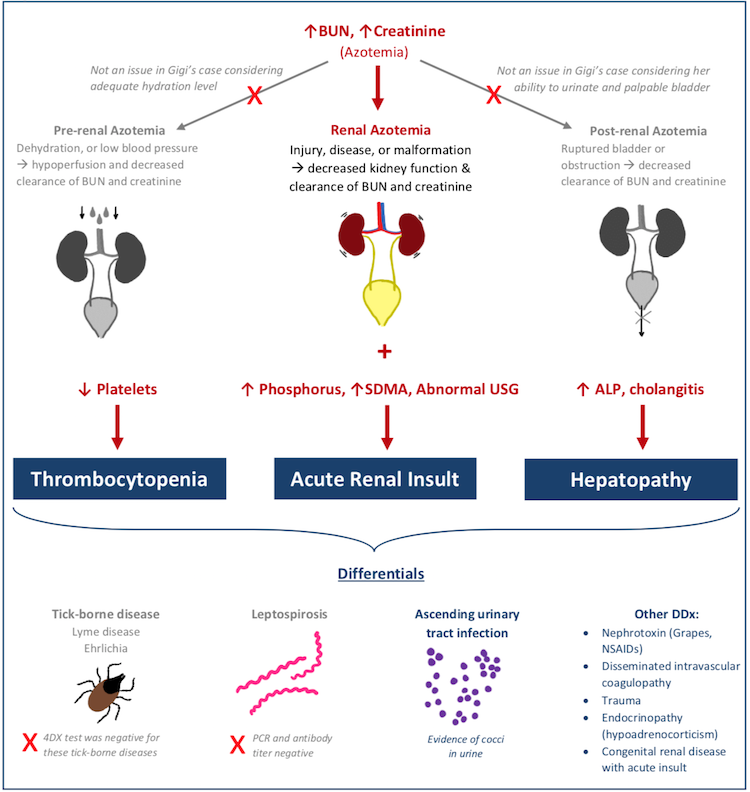

:max_bytes(150000):strip_icc()/1298399-article-img-causes-of-fainting1-5a5520127bb283003773f0c9.png) If you or the person you’re caring for has been vomiting or has had diarrhea, the doctor will want to know when it began and how frequently it’s been occurring.
If you or the person you’re caring for has been vomiting or has had diarrhea, the doctor will want to know when it began and how frequently it’s been occurring. Do I need to change the treatments I’ve been using for them?
Do I need to change the treatments I’ve been using for them?